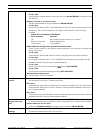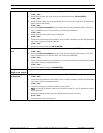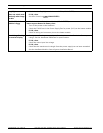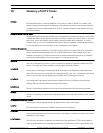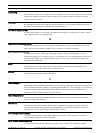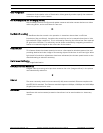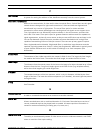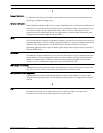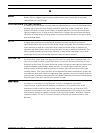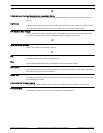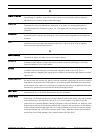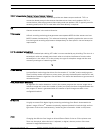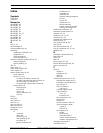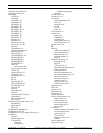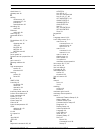
58 en | Glossary of CCTV Terms AutoDome Modular Camera System
F01U064036 | 1.0 | 2007.01 VG4-200, VG4-300, VG4-500i Series User’s Manual Bosch Security Systems, Inc.
M
MJPEG
Motion JPEG is a digital video encoding standard where each video frame is separately
compressed into a JPEG image.
Modal Dispersion (or Intermodal Dispersion)
A broadening of a waveform over long distances. Modal dispersion occurs in multimode fibers,
because light is bounced down different reflective paths (e.g. modes) in the fiber. As the
distance increases, the path (mode) begins to spread and the arrival time for the different
light rays begins to vary. A large variance (dispersion) increases the chance that the optical
receiver may interpret the incoming signals incorrectly. Modal dispersion is a major problem
with multimode fibers.
MPEG-4
A digital video encoding and compression standard that uses interframe encoding to
significantly reduce the size of the video stream being transmitted. With interframe coding, a
video sequence is made up of keyframes that contain the entire image. In between the
keyframes are delta frames, which are encoded with only the incremental differences. This
often provides substantial compression because in many motion sequences, only a small
percentage of the pixels are actually different from one frame to another.
Multimode Fiber
An optical fiber with a larger core (typically 50 or 62.5 microns) than singlemode fiber. The
core can be made of plastic or glass fibers and it is the most commonly used fiber for short
distances such as LANs. The name multimode comes from the fact that light rays travel down
multiple reflective paths (modes) within the fiber. This allows light to enter the core at
different angles, making it easier to connect to broader light sources such as LEDs (light
emitting diodes). Fiber optic interfaces and multimode fiber-based transmission systems are
less expensive than those based on singlemode fiber. However, the use of multiple reflective
paths (modes) increases modal dispersion (see Modal Dispersion) and shortens the distances
that this type of fiber optic transmission system can span.
Multi-Protocol
A protocol is a convention or standard that controls or enables the connection,
communication, and data transfer between two devices. In PTZ cameras such as the
AutoDome, protocol refers to the standard used to control the pan, tilt, and zoom (PTZ)
operation of the camera. Since each dome camera manufacturer’s PTZ protocols are unique,
multi-protocol support is needed to support third party dome systems. AutoDome cameras
support the Pelco “D” and “P” protocols and well as Bosch’s own biphase protocol (See
Biphase).



